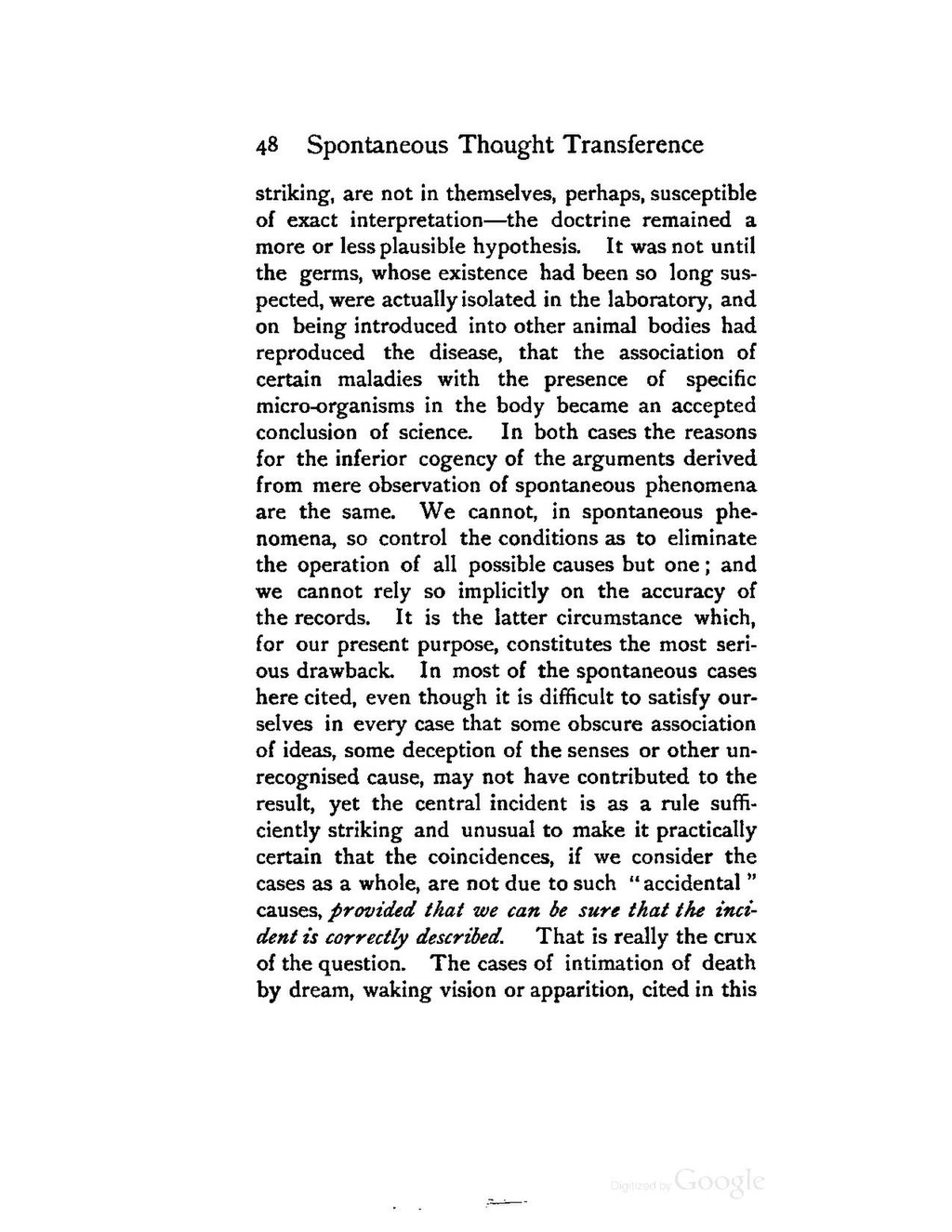striking, are not in themselves, perhaps, susceptible of exact interpretation—the doctrine remained a more or less plausible hypothesis. It was not until the germs, whose existence had been so long suspected, were actually isolated in the laboratory, and on being introduced into other animal bodies had reproduced the disease, that the association of certain maladies with the presence of specific micro-organisms in the body became an accepted conclusion of science. In both cases the reasons for the inferior cogency of the arguments derived from mere observation of spontaneous phenomena are the same. We cannot, in spontaneous phenomena, so control the conditions as to eliminate the operation of all possible causes but one; and we cannot rely so implicitly on the accuracy of the records. It is the latter circumstance which, for our present purpose, constitutes the most serious drawback. In most of the spontaneous cases here cited, even though it is difficult to satisfy ourselves in every case that some obscure association of ideas, some deception of the senses or other unrecognised cause, may not have contributed to the result, yet the central incident is as a rule sufficiently striking and unusual to make it practically certain that the coincidences, if we consider the cases as a whole, are not due to such "accidental" causes, provided that we can be sure that the incident is correctly described. That is really the crux of the question. The cases of intimation of death by dream, waking vision or apparition, cited in this
